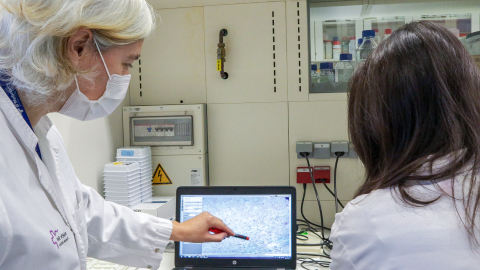New nanomedicine for the treatment of Fabry rare disease

The new drug improves on current treatments and helps reduce costs and improve patients' quality of life. This is one of the major achievements of the European Smart4Fabry project, which is now coming to an end after four years of work.
26/02/2021
The advance of nanomedicine opens up new possibilities in the development of drugs, such as the one recently developed for the rare disease Fabry, with improved efficacy compared to existing authorised treatments.
Thus, the European Smart4Fabry project has come to an end with one of the best results possible: the designation of a new orphan drug by the European Commission and the possibility of making progress in the treatment of Fabry, a rare disease that is estimated to affect approximately 2.6 out of every 10,000 people in the EU.
It is a chronic debilitating disease due to recurrent episodes of severe pain that is difficult to control with conventional analgesics, and it is life-threatening due to renal failure and associated cardiovascular and cerebrovascular complications.
“With this designation we have made a major achievement, not only for Fabry patients, but also for other pathologies that can benefit from this same approach, made possible by nanotechnology,” explained Nora Ventosa, a researcher at CIBER-BBN and ICMAB-CSIC who coordinated the project.
Need for new treatments for the disease
This disease, also known as Anderson-Fabry disease, represents the most common lysosomal storage disorder. It is caused by an absence or deficiency of the enzyme α-galactosidase A (GLA), which results in the lysosomal accumulation of globotriaosylceramide (Gb3) and its derivatives in the lysosomes of a wide variety of tissues, responsible for the clinical manifestations. Current treatments consist of intravenous administration of the GLA enzyme, but have limited efficacy and poor biodistribution.
The drug that has been developed is a new nanoformulation of GLA (nanoGLA) that improves efficacy compared to the reference treatment with non-nanoformulated GLA. “The third-generation liposomal product we have developed in the project has demonstrated, at preclinical level, improved efficacy, compared to authorised enzyme replacement treatments, demonstrating that the strategy of supplying the affected cells with the GLA enzyme via the smart nanoliposome is highly successful", explained Ibane Abasolo, a researcher at CIBER-BBN and VHIR, who is responsible for the efficacy studies in the project.
ThenanoGLA product was obtained using DELOSTM formulation technology, an innovative platform for the robust production of nanomedicines in an efficient and sustainable manner.
Interdisciplinarity and public-private collaboration
The Smart4Fabry project has been running since 2017 thanks to European funding of €5.8 million, from the Horizon 2020 programme. This was possible thanks to the collaboration of several CIBER-BBN groups at the Institute of Materials Science of Barcelona (ICMAB), the Institute for Advanced Chemistry of Catalonia (IQAC), both under the CSIC, the Vall d'Hebron Research Institute (VHIR) and the Institute of Biotechnology and Biomedicine of the Autonomous University of Barcelona (IBB-UAB). It has also been necessary to contribute knowledge from different academic and business disciplines.